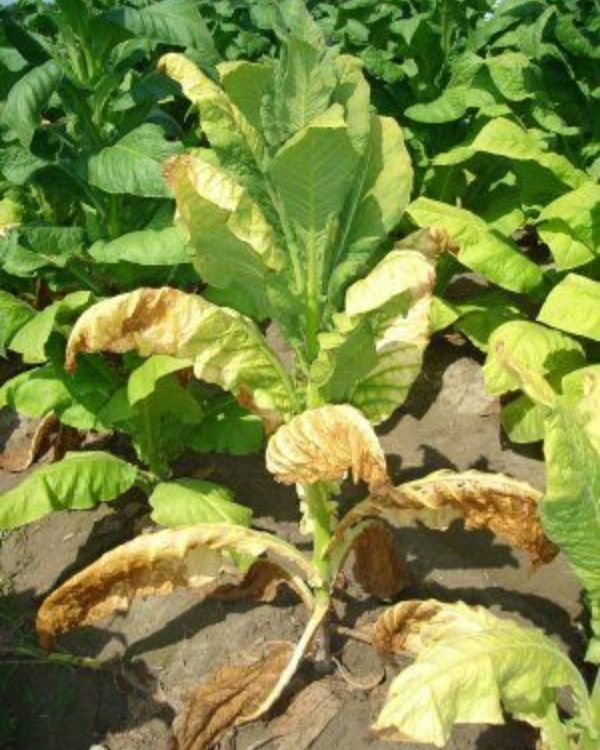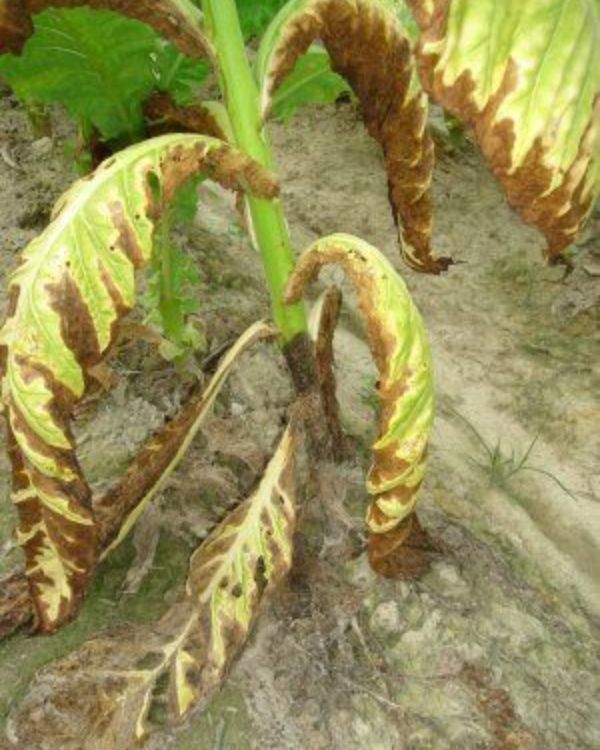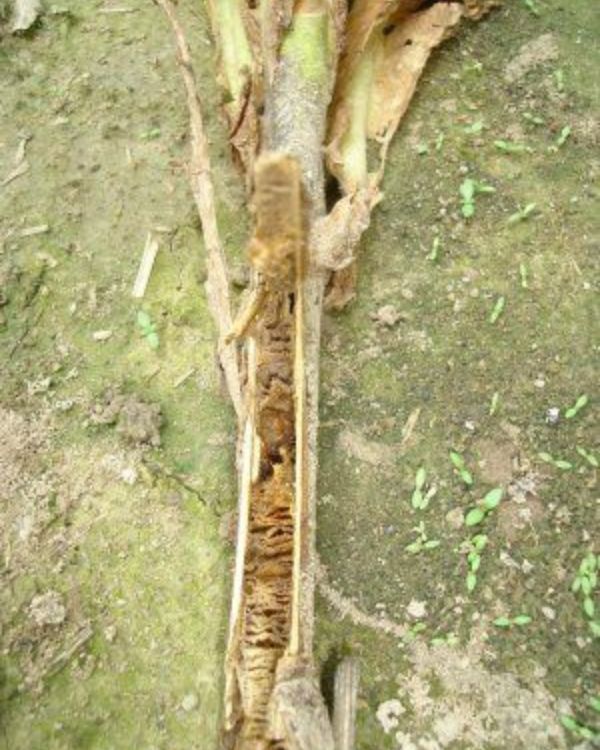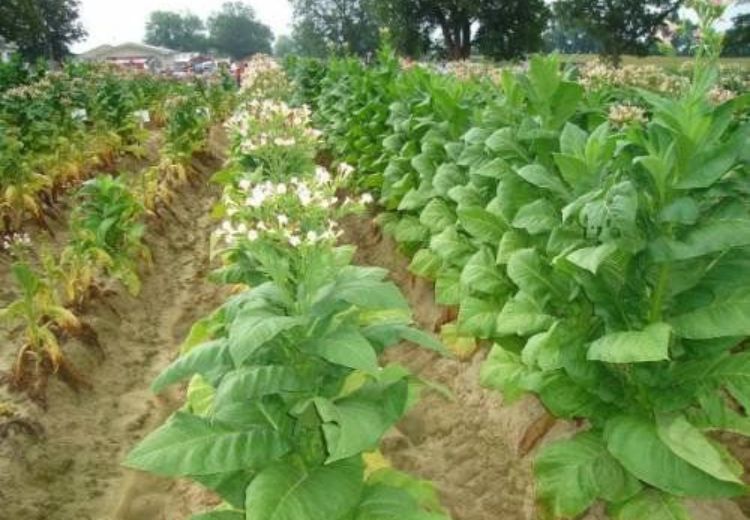Diseases and Pests
Black Shank
Black Shank can infect tobacco plants of any age. In young transplants, the stem can be affected near the soil surface, while the root system may become partly or completely black. Symptoms can be confused with damping-off caused by other organisms. In adult plants, a blackened lesion is observed at ground level and can spread to the stem.
Leaves may uniformly wilt overnight, turning yellow and wilting while still on the stem. If the stalks are split longitudinally along the infected portion of the stem, plate-like disks will be observed. Hot weather conditions and humidity favor Black Shank development. Advanced stages of this disease may cause partial or complete decay of the root system.
Under rainy crop conditions the plants may survive. However, stresses caused by dry weather conditions or hot temperatures normally kill the infected plants due to the collapse of the water absorption system.
The Black Shank fungus Phytophtora parasitica var. nicotianae survives in the soil and is easily spread to non-infected areas by equipment or through water. As the spores of the fungus are mobile, the distribution of the disease within a field may not be uniform. There are two known types of Black Shank, race 0 and race 1, and they are easily confused.
The most important management practice for the control of Black Shank is the use of resistant cultivars, but registered and approved fungicides are also efficient. Crop rotation and nematode control are also important, because nematodes pave the way for Black Shank to infect tobacco.
The destruction of crop waste/remains plays an important role in the control of Black Shank.
ProfiGen released several cultivars and hybrids with good resistance and/or tolerance to the different types of Black Shank. It is extremely important to identify which type of Black Shank has infected the field in order to opt for the most appropriate cultivars for every situation.
Symptom disease pictures:
See also
-
Diseases and Pests
- Cucumber Mosaic Virus - CMV
- Nematodes
- Potato Virus Y - PVY
- Yellow Stunt
- Diseases and Pests
- Bacterial Wilt
- Tobacco Mosaic Virus - TMV
- Curly top - BCTV
- Tomato Spotted Wilt Virus - TSWV
- Black Shank
Related products
-
NC71
Black Shank - Resistant
-
NC72
Black Shank - Resistant
-
PVH1452
Black Shank - Resistant
-
PVH1600
Bacterial wilt tolerant
-
PVH2233
PVY - Resistant
-
PVH2261
PVY - Resistant
-
PVH2275
Nematode - Resistant
-
PVH2310
Early maturity
-
PVH2324
Early maturity
-
PVH2329
Yellow Stunt - Tolerant
-
PVH2340
Nematode - Resistant
-
PVH2356
Nematode - Resistant
-
PVH2376
Nematode - Resistant
-
PVH2404
PVY - Resistant
-
PVH2408
Nematode - Resistant
-
HB4155P
Fusarium and Bacterial Wilt - Tolerant
-
HB4167P
Black Shank - Resistant
-
HB4192P
Black Shank - Resistant
-
HB4488P
Nematode - Resistant
-
KT204LC
Black Shank - Resistant
-
KT206LC
Black Shank - Resistant
-
KT209LC
Black Shank - Resistant
-
KT210LC
Black Shank - Resistant
-
KT212LC
Black Shank - Resistant
-
PD7309LC
Dark Hybrids
-
PD7318LC
Dark Hybrids
-
POH6002
Oriental Hybrids




